The Grand Teton (13,776’) is the crown jewel of Grand Teton National Park. The mountain’s trapezoidal shape is breathtaking and would catch the eye of even the mildest of climbers. It was first climbed in 1898 by William Owen, Frank Petersen, John Shive and Franklin Spalding. This team ascended the mountains northern face up a route they named the Owen-Spalding. Today there are numerous routes to the top of the Grand, but I’ll just be focusing on the Owen-Spalding route.
Before reading any further it’s critically important that you understand that climbing is dangerous! Attempting something outside of your skillset puts your life and the life of your potential rescuers in danger. DO NOT ATTEMPT TO CLIMB THE GRAND TETON IF YOU DO NOT HAVE THE REQUIRED SKILLS!
I’m going to layout the strategy we used to climb the Grand Teton in a single day. I’ll be upfront in saying that this is VERY physically challenging! It consists of 16 miles of hiking, scrambling, climbing and over 7,000’ of elevation gain. If that sounds like too big of a day, then check out How to Climb the Grand Teton for a more relaxed approach. However, if torturing your body is your idea of fun… then continue.
ALSO, if climbing isn’t your style then check out 13 Fun Things to do in the Tetons for a more casual day of adventure.
Contents
| ***Disclosure: This post contains affiliate links. If you click one of them, I may receive a small commission (for which I am very grateful for) at no extra cost to you. |
Best Time to Climb the Grand Teton
You can climb the Grand Teton at any time of the year, but the sweet spot for summer conditions usually falls between July-September. However, the conditions vary year to year and it’s always best to give the Jenny Lake Climbing Rangers a call for the latest conditions.
For the latest mountain conditions: 307-739-3343
General Inquiries: 307-732-0969
The Approach
Trailhead to Lower Saddle
The approach to the Grand Teton starts at the Lupine Meadows Trailhead. You’ll take the Valley Trail towards Garnet Canyon. The 4.5 miles and 2,500’ gain to Garnet Meadows is beautiful and would NORMALLY provide the most enjoyable hiking of the day, but since you’re doing this in one day the “alpine start” is a little earlier than normal which means it’s dark outside and you won’t be able to see any of this.
At Garnet Meadows you’ll see a few idyllic campsites where all of the sane people climbing the mountain in 2 days are camping. This is a good time for a little break and then you can continue onwards and begin your ascent up Garnet Canyon to the Lower Saddle. Here you’ll gain another 2,500’ in just 2 miles and I’m not going to lie… it’s BRUTAL.
After about 5’000’ of pre-dawn hiking, you’ll arrive at the lower saddle. The sun should be rising (if not already risen) and this is a great time for another snack/picture break. When you’re finished enjoying the view, it’s time to navigate to the upper saddle.
Lower Saddle to Upper Saddle
This is a good time to strap on your brain bucket because the mountain gets steeper, and the hike quickly transitions to a scramble. Plus the route finding can get a little tricky here.
In general you’ll head northeast up the obvious black dike and up the left side of “the needle” You’ll eventually see a chimney with a large chockstone on climbers right. Pass this chimney and begin looking for an easy path back to the right that takes you to the “Eye of the Needle”. Once through the “Eye of the Needle” continue upward and maneuver around the “Belly Roll Almost”. At this point you’ll continue up on the right side of the gully until reaching the upper saddle between the Enclosure and the Grand Teton. You’ll gain roughly 1,500 from the lower to upper saddle.
I’m aware most of that doesn’t make sense so make sure to check out the helpful links below.
Now that you’re adequately exhausted it’s time to start the technical climbing.
Route Details
Name: Owen Spalding
Rating: 5.4, 3 Pitches
Gear: Singles .3-3, set of nuts, many slings, 60m rope
Pitch 1: From the upper saddle you’ll traverse climbers left. You’ll pass the Belly Roll, the Crawl, and then continue to the double chimneys. Either is climbable, but we opted for the second chimney. Build your anchor here.
Pitch 2: Climb directly up the chimney, into Owens Chimney and then to the base of Sargents Chimney OR after the first chimney go up-right to the Catwalk. If this is your first time on the mountain it would be a good idea to take the catwalk which will lead you to the descent rappels. From the rappels you can turn back left-up and scramble to the base of Sargents Chimney. We skipped Owens Chimney due to traffic.
Pitch 3: Climb Sargents Chimney and then trend up-left. We roped up here but ended up not placing a single piece of gear.
From here it’s a left trending indirect path to the summit. As many others have stated in other sources, it’s critical to take note of your path up to the summit from this point because it will not be obvious on your way down.
For the descent retrace your steps back to Sargents Chimney. Here you can either rappel or down climb. We opted to down climb and found it to be fairly easy. Once down we trended skiers left to reach the rappel stations. There’s a bolted 40m option or a slung boulder 30m option. We used the slung boulder and rappelled to the lower saddle with our 60m rope.
From here you’ll begin the lonnggg slog back to the lower saddle and down to the car.
Strategy to Climb the Grand Teton in a Day
The strategy for an outing like this will vary for everyone based off your induvial fitness and climbing ability. Fitness is a relative thing and can be hard to relay to others. I would consider us to be fit hikers/climbers relative to the general population. We’ve both completed a marathon and casually climb in the moderate range of difficulty (5.7-11). However, relative to avid alpine climbers I would consider us well below average. Mountain fitness is quite different than general fitness and that should be considered when making your strategy.
Get an Alpine Start
We started our day at 1am. Our plan was to reach the lower saddle by sunrise, and we managed to meet that goal by arriving at 6am. At the lower saddle we were both feeling sluggish, so we stopped for a long break to eat our breakfast before continuing. Our overall goal was to reach the summit before noon, and we had plenty of time to achieve that.
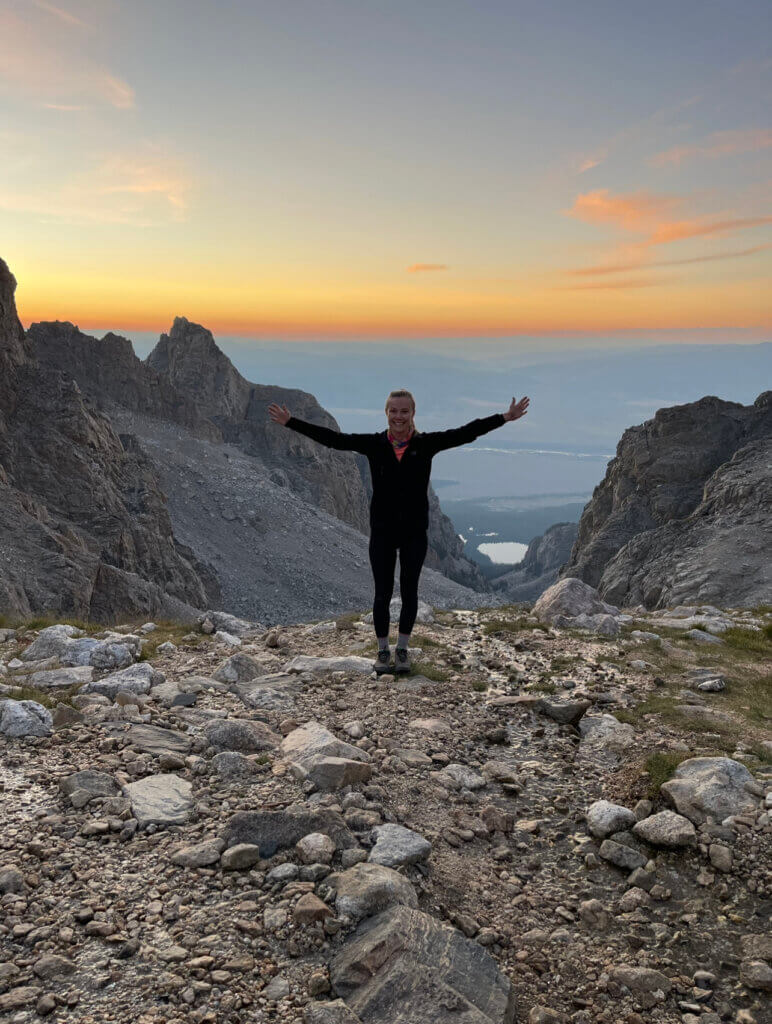
After breakfast at around 7am we began the climb to the summit. A slow but steady pace is key here. Once we reached the upper saddle we were forced to take another (but welcomed) break due to the line of people waiting to start the first pitch. We reached the summit just after 10am and spent about an hour on top enjoying the views with our lunch and summit beers while discussing how much we were dreading the hike down.
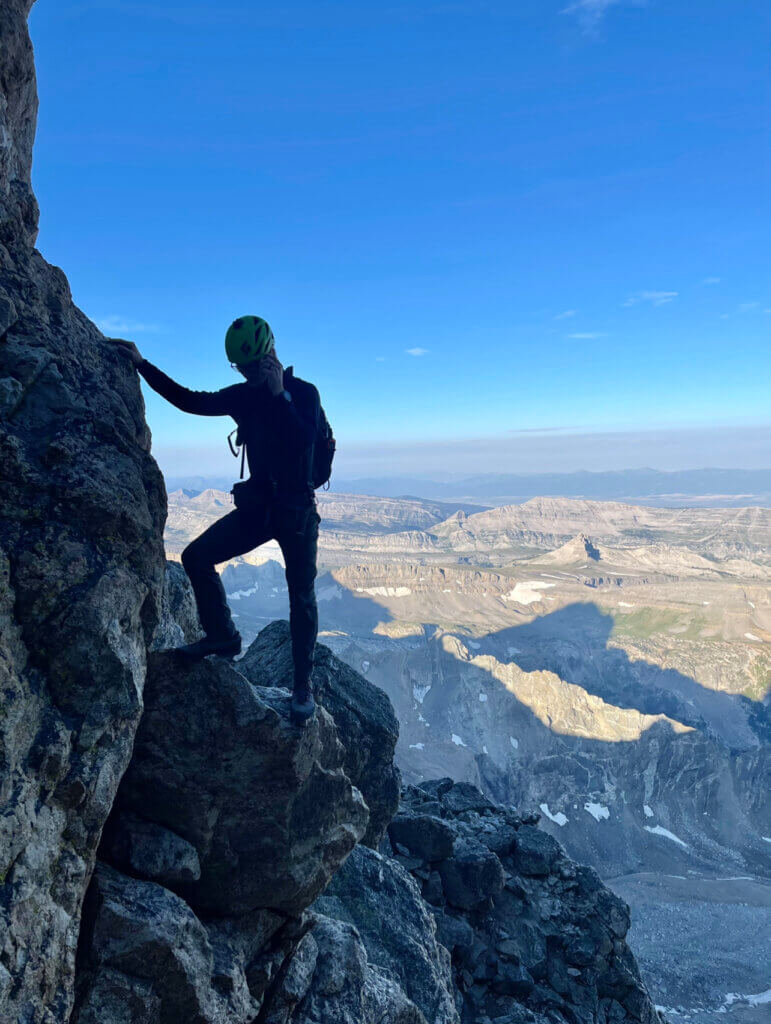
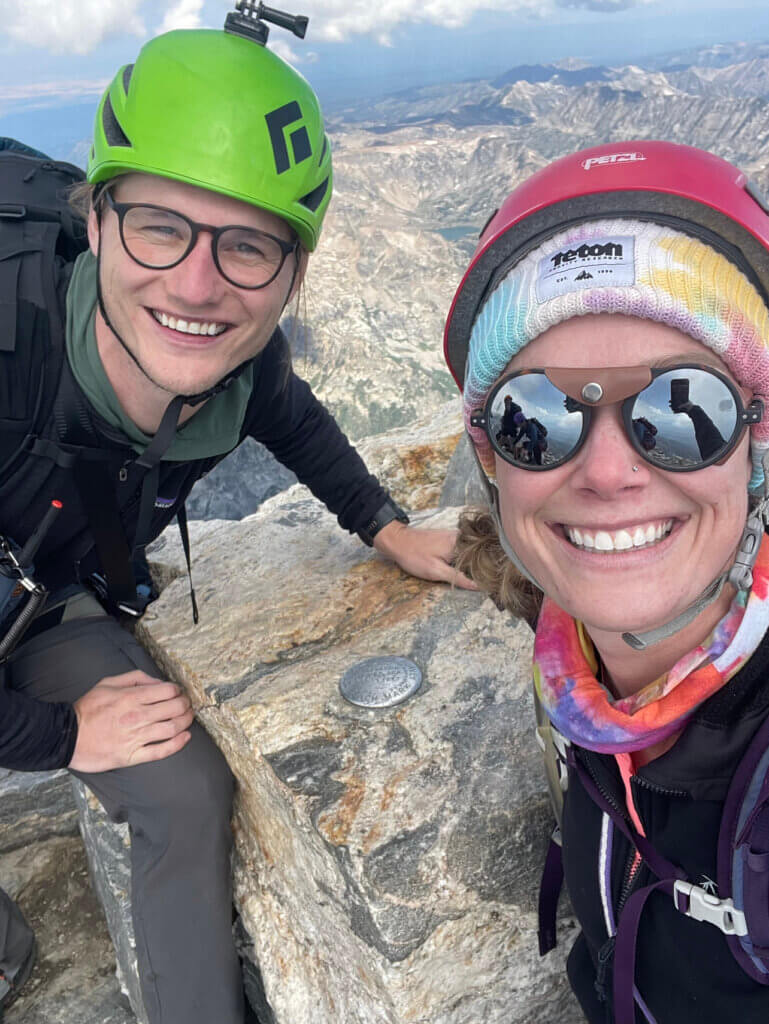
The Descent
Our descent started at 11:20 and we managed to make it back to the lower saddle by 1pm. Both the ascent and descent from the lower saddle were hindered by slower parties at various sections throughout the mountain so your times will likely vary here. We took another break here until we were forced to continue by an incoming storm. We arrived at Garnet Meadows at 4pm and by this point we were pretty well depleted so we stopped to soak our feet in the stream and proceeded to take the most incredible nap of our lives.
Eventually, we had to continue our trek to the car and arrived back at the trail head battered and bruised around 7pm. We wanted to go to dinner to celebrate our accomplishment, but just making it back to our campsite felt like an Olympic feat.
All said and done it took us 18 hours car to car.
5 hrs – Trailhead to Lower Saddle (1-6am)
3 hrs.- Lower Saddle to Summit (7-10am)
1.5 hrs.- Summit to Lower Saddle (11:30am-1pm)
2 hrs.- Lower Saddle to Garnet Meadows (2-4pm)
2 hrs.- Garnet Meadows to Trailhead (5-7pm)
This is a casual pace that I believe is achievable for any decently fit stubborn person who enjoys physically torturing themselves while in a beautiful setting. For reference, just to show how slow that time actually is, the current Fastest Known Time (FKT) for the route is 2h:53m:2s which was set by Andy Anderson in 2012. He made it up and down the mountain in almost half the time it took us to reach the lower saddle. I can’t even wrap my head around that.
Recommended Gear to Climb the Grand Teton
If you’re considering attempting this climb in a day the I assume you own all of the necessary equipment, but if you’re looking to replace anything here’s a list of our favorite pieces of gear.
Approach Shoes: We both use the Men’s and Women’s La Sportive TX4’s and highly recommend them.
Daypack: A good, sturdy climbing/daypack hybrid is perfect for this climb. The Ortovox Traverse 30L is the best daypack out there!
Climbing Harness: Petzyl Harnesses (men’s and women’s) are super comfy and last FOREVER!
C4 Cams: Black Diamond Cams are our tried and true go-to’s.
Set of Nuts: Our favorite nut set is the Black Diamond wired stopper set.
Nut Tool: If you place a nut, you’ll have to have a nut tool!
Wired Carabiner Set: I haaaate having to buy new wired carabiners but at least they last a long time.
Locking Carabiner Set: Same with the locking carabiners– annoyingly expensive but absolutely MUST HAVE’S. Don’t skimp on them.
Alpine Draws: Big fan of these Black Diamond alpine quick draws!
Dyneema Slings: These Mammut slings are lightweight with great stitching where the loop connects so it slides through carabiners smoothly and rarely gets snagged.
Helmet: A lightweight climbing helmet is a must.
ATC Guide: For all of your belaying and rappelling needs! You’ll need one per person.
Prusik Loop: Also for the rappel– one per person.
Satellite phone: There is NO SERVICE out there and you never know when/if you’ll encounter an emergency on the trail. You should ALWAYS carry a satellite gps device with you in the backcountry. We use the Garmin inreach mini and LOVE it!
Water Filter: You must filter (or boil) all water you get from the lakes, streams, rivers along the loop. The sawyer squeeze is super packable and gets the job done.
Offline map: We use alltrails for our trail map although it’s not always 100% reliable. It is best used as a reference.
Waste System: You’ll need to bring either a trowel system or wag bag for your waste. If you go for the trowel be sure to bring a paper bag to pack out your TP.
Helpful Resources
Wyoming Whiskey Blog
This blog is littered with pictures and written with incredible detail. It’s very helpful, but borderlines on overwhelming. It’s written with the intent of aiding free soloist but the information is equally as useful for roped parties.
Guide Book
If you’re planning to tick off some the classics while visiting the park then I recommend this guide. I’ve used it for our last two trips to the park and it’s been very helpful.
Mountain Project
Mountain project is the All Trails of the climbing world. If you didn’t know this already theres a good chance you’re getting in over your head with this activity.
Mountain-Forecast
This is an excellent resource for general mountain recreation. This website allows you to see the seven day forecast and filter the weather for specific elevations.
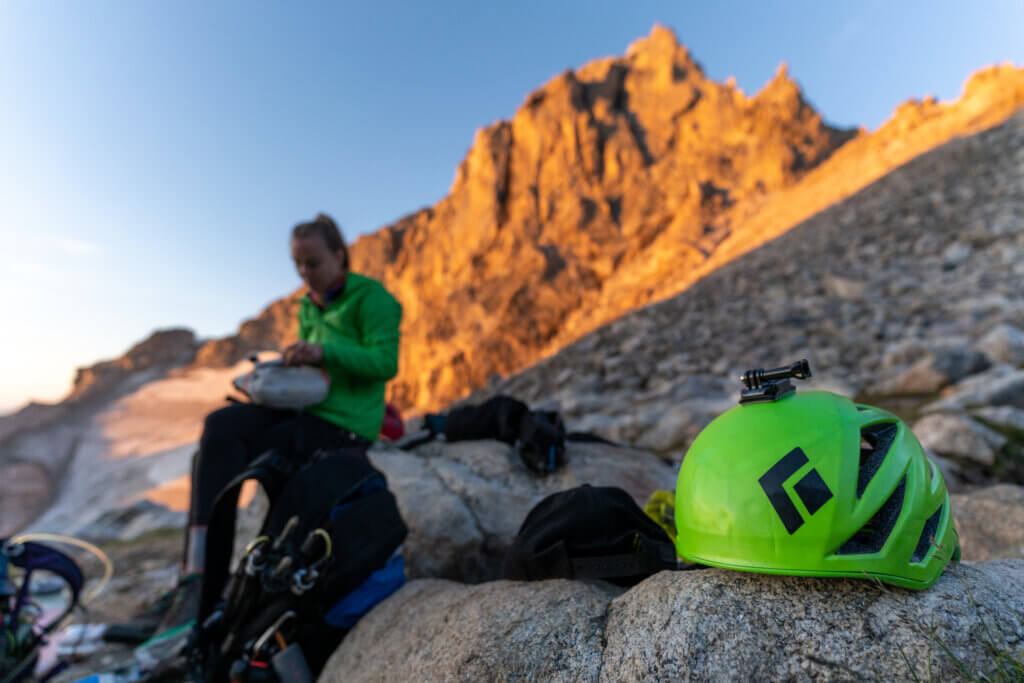

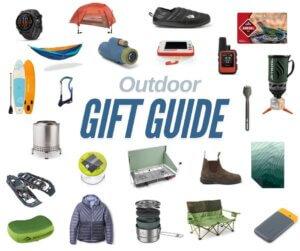

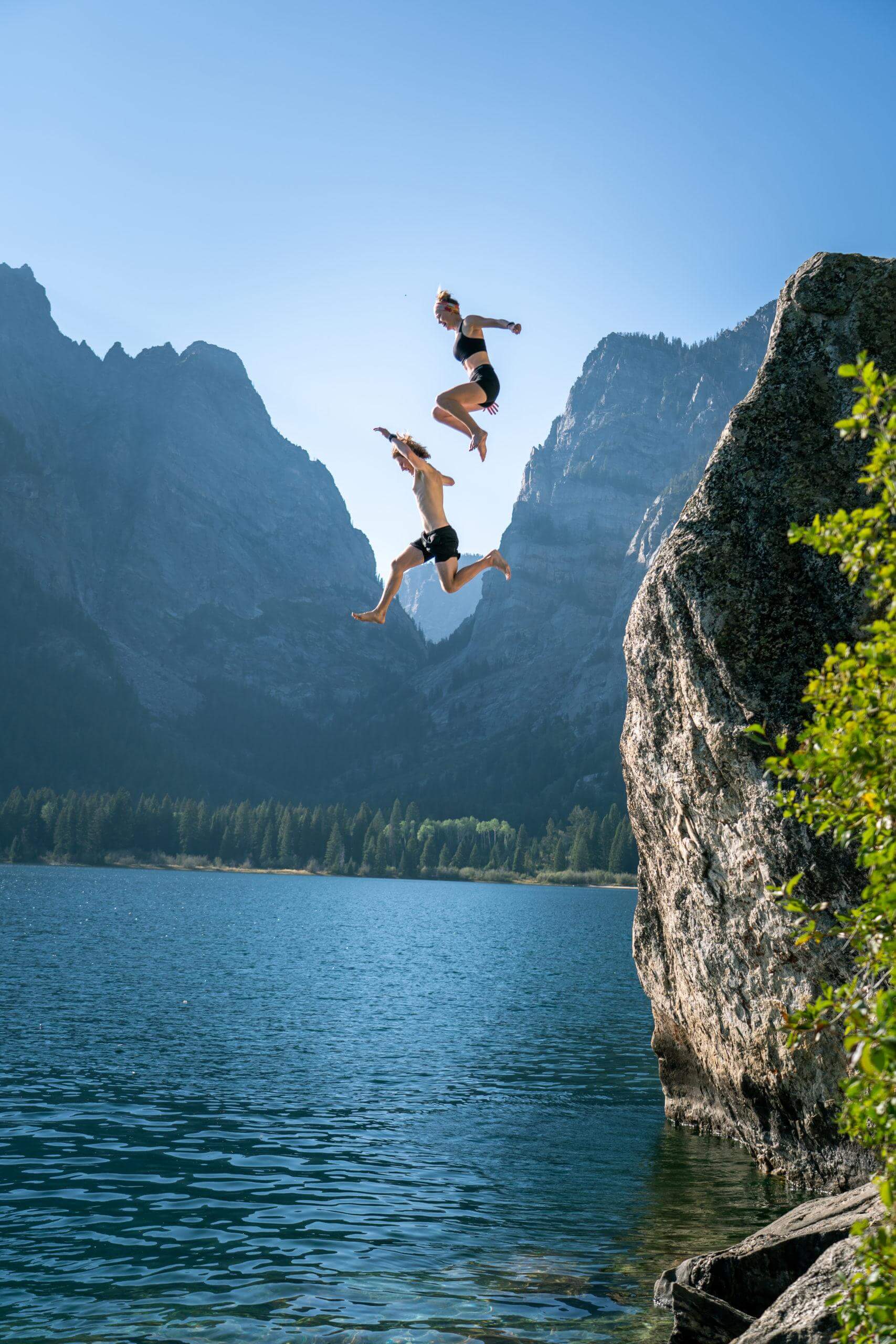
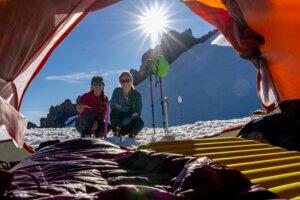
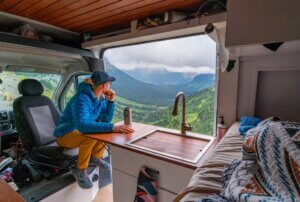
1 thought on “How to Climb the Grand Teton in a Day”
Our son is on the mountain right now. He left his family at their campsite at 3 AM. I always worry when he is on a mountain, but he is skilled and loves his climbs.
Thanks for giving me a view of what he may be doing today.
Evan’s Mom
9-12-2023